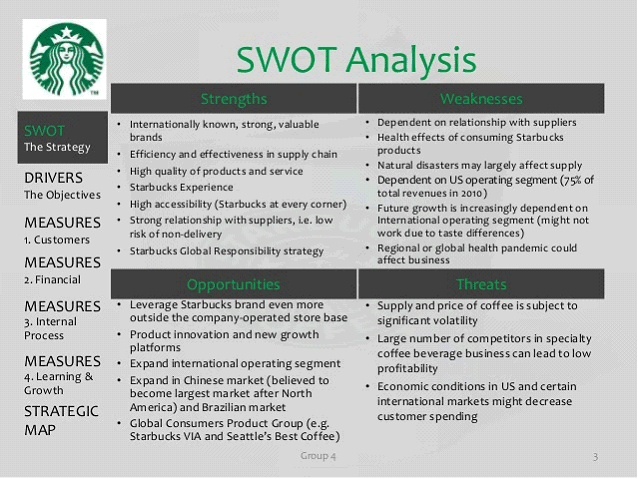From IT Leadership 7 Management, lecture 2, Strategy I:
"So in in chapter two, in Phoenix, Bill Palmer mentions he needs to get situational awareness. What does he mean? is he using a military term? And sure enough, if you look up situation awareness on the internet, you'll find that a wonderful definition by the US Coast Guard.[1] But it's this ability to essentially figure out what's going on around you. So, what are the critical elements, what's happened with the team? What's happening with the process? Do you have a sense of the situation in which your organization is about to take a new strategic direction?
SWOT and Pestle
What, what do we have now? What do we know now? What don't we know? is part of those questions.
And there are a number of tools or techniques to take a look at this and perform this type of assessment. And one is this question of where are we in terms our strengths and weaknesses?. So, the organizational strengths, the organizational weaknesses, and that requires some honesty, require some candor and sometimes requires saying some unpopular things. You know, for example, when the IT department admit we're not really strong enough tech To make this little adversity statements you want to follow that up with here's what I think we do to get to make that loop. And then what about the external factors? What are the threats from competitors? What are the threats from the economy? What are the threats of global trade, for example? And then what opportunities? What things do we see on the horizon that we can take advantage of, and capitalize on and make a strong move forward? Then this is why we do SWOT analysis. And as you might suspect, SWOT is an acronym for strengths, weaknesses, opportunities, threats. It's one of the most basic ways of analyzing the context for an organization. And if you do a search on Google for SWOT, you'll find hundreds of SWOT Analyses done in most organizations. I'll show you why in a minute. There are other techniques called pet like PESTLE, for example, which takes into account more In the political and environmental surroundings, technical horizons analysis, Michael Porter, who I mentioned earlier, has what he calls the five forces analysis, there's another program called soar. And then there's a driving force analysis is exactly one I use in my consulting company. But SWOT the most straightforward, the most widely use.
And so, we'll focus on doing that looking at SWOT analyses and actually creating a comparison of SWOT Analyses with examples like your Starbucks, for example, and they're typically done, this is almost impossible to read the link for this in the notes section. The strengths are up here. Then the weaknesses, and then the opportunities and the threats.
 Figure 15 - A Sample SWOT - Starbucks[2]
So, on this side of the chart, these are the positives and the negatives. And then there's a whole bunch of you know, like a threat, the supply and price of coffee is subject to significant volatility. That's a threat to Starbucks. And an opportunity Well, we can leverage the Starbucks brand even more outside the company operate a store base branch out beyond the store base. Like grocery stores, for example, you might see stuck products on the grocery store show strength, internationally known strong and a valuable brand, and a weakness depending on the relationship dependent rather on the relationship with suppliers. So, this type of analysis and can be done brainstorming usually with teams inside of the organization, it's a bread and butter activity for consultants to do is to sort of fill out the chart on the organization in terms of the strengths, weaknesses, opportunities and threats, and then maybe some other things that are pushed on the side in terms of measurements in terms of goals, and other items that you'll see as you look at different ones of these." --"IT's About the Conversation," Chapter 2, "Strategy I," pp. 72-73. |